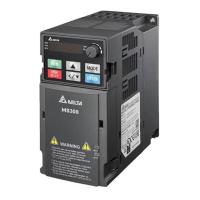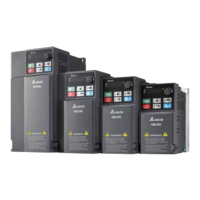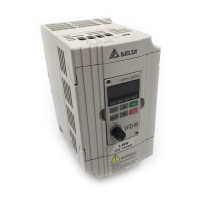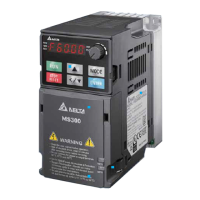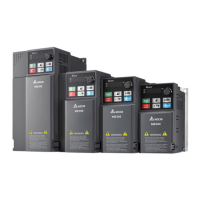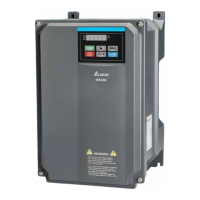Chapter 16 PLC Function ApplicationsMH300
The various internal devices in a PLC use a certain amount of memory in the PLC’s storage area.
When you use these devices, the content of the corresponding storage area is read in the form of bits,
bytes, or words.
The following table describes the internal devices in a PLC
Device
Type
Description of Function
Input
Relay
An input relay constitutes the basic unit of storage in a PLC’s internal memory, and
corresponds to an external input point. It
serves as a terminal connecting with an external
input switch and receiving external input signals. It is driven by external input signals, to
which it assigns values of 0 or 1. A program design method cannot change the inpu
status, and therefore cannot rewrite the corresponding basic units of an input relay
cannot use WPLSoft to manually perform ON/OFF actions. You can use a relay’
(contacts A and B) an unlimited number of times in a program.
An input relay with no input
signal must be left idle and cannot be used for some other purpose.
Input devices are indicated by X0, X1, X7, X10, X11, and so on. These devices
indicated with the symbol X, and a device’s order is indicated with an octal
Input point numbers are indicated in the main PLC and in expansion devices.
Output
Relay
An output relay constitutes the basic unit of storage in a PLC’s internal memory, and
corresponds to an external output point. It connects with an external load. It can
be driven
by an input relay contact, a contact on another internal device, or its own contacts. It uses
one N.O. contact to connect with external loads or other contacts, and like the
contacts, you can use the output relay’s contacts an unlimited number of times
program. An output relay with no input signal is idle, but can
be used by an internal relay if
needed.
Output devices are indicated by Y0, Y1, Y7, Y10, Y11, and so on. These devices are
indicated with the symbol Y, and a device’
s order is indicated with an octal number.
Output point numbers are indicated in the main PLC and in expansion devices.
Internal
Relay
Internal relays have no direct connection with the outside. These relays are auxiliary r
elays
inside a PLC. Their function is the same as that of an auxiliary (central) relay in an electrical
control circuit: Each auxiliary relay corresponds
to a basic unit of internal storage; they can
be driven by input relay contacts, output relay contacts, and the contacts of other internal
devices. You can use an internal auxiliary relay’s contacts an unlimited number of times
a program. Internal relays have no outputs to the outside, and their status
through an output point.
Internal relay devices are indicated by: M0, M1–M799, and so on. These devices are
indicated with the symbol M, and the device’s order is indicated with a decimal num
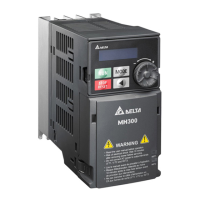
